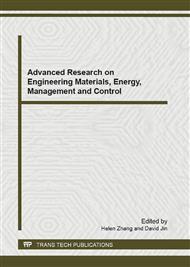p.1207
p.1211
p.1215
p.1220
p.1224
p.1228
p.1233
p.1237
p.1244
Effect Analysis of Different Exhaust Velocity on Fire Smoke Control in Subway Tunnel
Abstract:
Taking a subway tunnel as the research object and based on the CFD simulation method, this paper adopts a large eddy simulation analysis software FDS to simulate and analyze the effect of exhaust velocity on fire smoke control under the condition of the same longitudinal ventilation velocity in subway tunnel. The simulated results can provide some reference to design institutes in the selection of exhaust fan. While the longitudinal ventilation velocity set as 1m/s, the simulation results demonstrate that a quite good smoke control effect could be achieved when the exhaust velocity reaches 5 m/s in the smoke exhaust duct
Info:
Periodical:
Pages:
1224-1227
Citation:
Online since:
January 2012
Authors:
Keywords:
Price:
Сopyright:
© 2012 Trans Tech Publications Ltd. All Rights Reserved
Share:
Citation:


